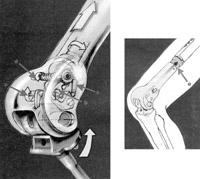Artificial nets
2000/09/01 Elhuyar Zientzia Iturria: Elhuyar aldizkaria
Researchers Alan Chow, Gholam Peyman and José Pulido have already introduced synthetic artificial networks into the eyes of several patients.
The artificial silicon network (ASRTM) is thinner than the grain of hair and consists of 3,500 microscopic cellular photovoltaic. Cells transform light into an electric quinada, that is, they act as natural photoreceptors that blinded people are damaged. Artificial photoreceptors have been used for patients with diseases such as pigment retinitis and the early stages have been successful.
At the Illinois University of the Chicago Medical Center the retinas mentioned were installed to 3 people: make a hole in the needle diameter eye, remove the room we have in the center of the eye, replace it with a salt solution and place the chip behind the eyelashes. The sick were 24 hours later at home and the eye was formed two days later.
At the moment only the safety and efficiency of the system is being demonstrated, so patients have been placed a chip lower than necessary on a side of the tab. However, the affected area is expected to partially recover vision within a month. In case the eyes accept implants, larger chips will be applied to patients and it is estimated that those in the final phase of retinitis pigmentaria will regain sight.

Gai honi buruzko eduki gehiago
Elhuyarrek garatutako teknologia





